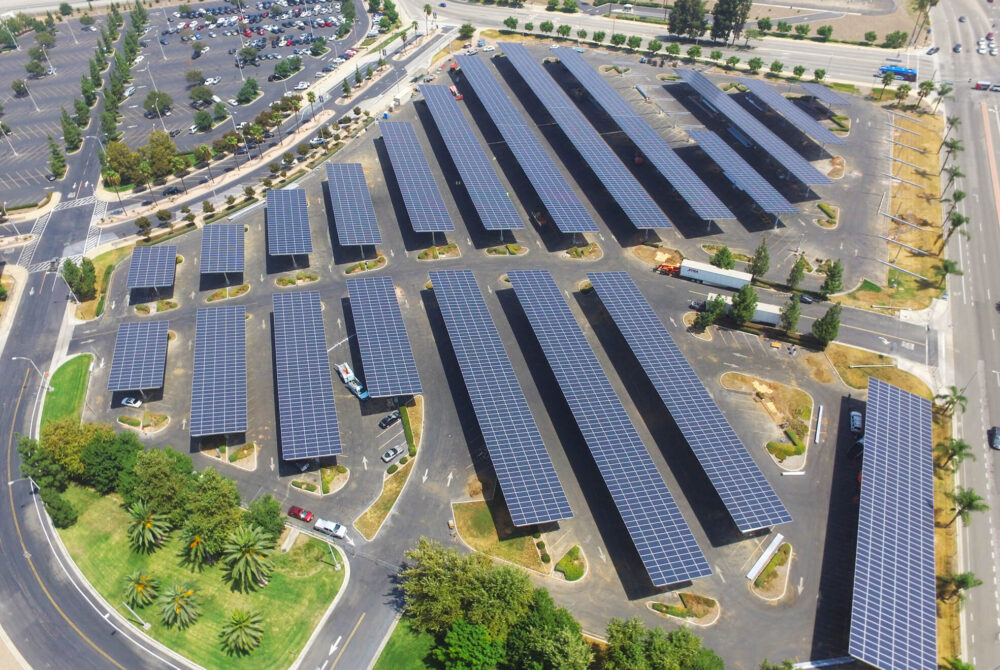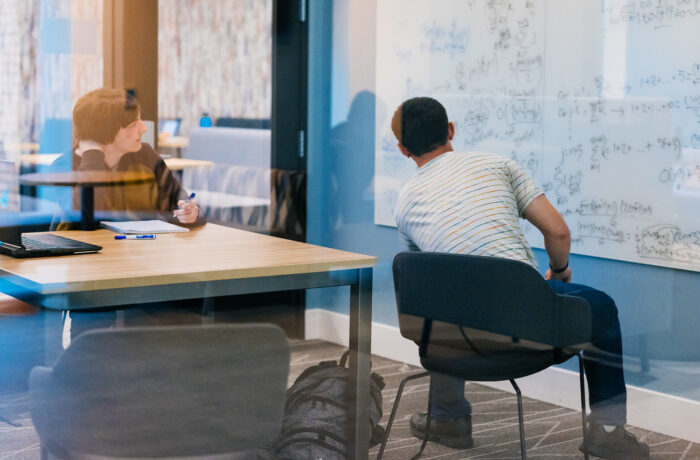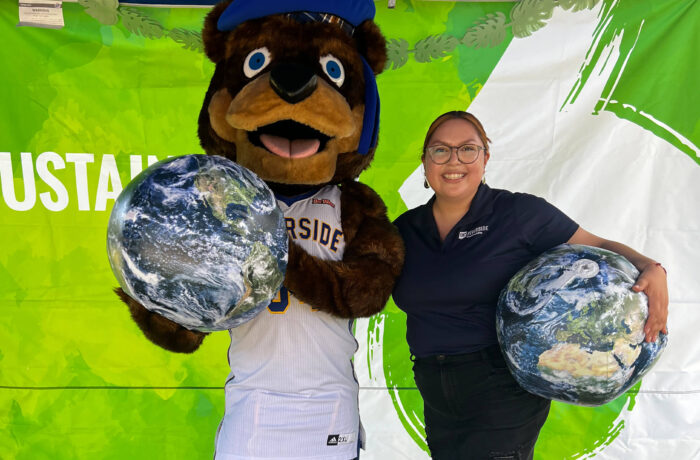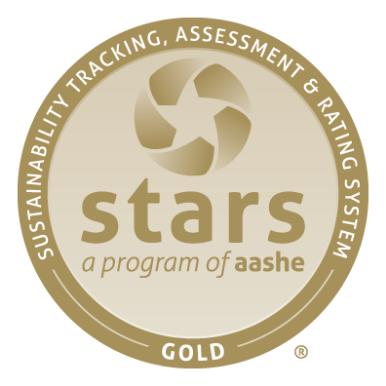UC Riverside returned to in-person classes for the first full year since the outbreak of the COVID-19 pandemic, bringing life to campus in many new ways.
The Student Success Center, one of the newest buildings on campus, gained national recognition and awards from multiple organizations, including the Design Build Institute of America’s National Award of Excellence. The first solar rooftop projects for the campus located on the Student Recreation Center South and the Student Services Building received the Rooftop Project of the Year Award from Solar Builder Magazine, and a new parking structure that achieved Parksmart certification at the Silver level was recognized by the International Parking & Mobility Institute with the 2023 Award of Excellence for Sustainable Design.
Read More about Sustainability at UC Riverside
The bustling campus found renewed efforts in zero waste, alternative transportation and green labs, and broke ground on several new building projects. In addition, the total waste generated per person was reduced to 0.5 pounds. These efforts were bolstered by the addition of two California Climate Action Corps fellows through the governor’s California Volunteers office. Remote work adoption, new student housing and electric vehicle (EV) adoption all helped reduce commute emissions compared to pre-pandemic levels. Green Labs launched an incentive program that provided up to $2,500 per lab for more efficient lab equipment. Three major campus building projects commenced, including the School of Business New Building, the Student Health and Counseling Center, and the School of Medicine Education Building II — two of which include rooftop solar photovoltaics.

CLIMATE PROTECTION – EMISSIONS
* Interim goals for 2030, 2035 and 2040 to be developed through fossil-free planning that is underway at each location
** 90% direct reduction of total emissions from 2019 levels with residual emissions negated by carbon removal
In 2022, overall emissions increased by 32% from the previous year. This was driven primarily by the lifting of COVID restrictions resulting in an increase in commuting and air travel. Natural gas usage on campus remained steady compared with the previous year for an increase of 2.2% in scope 1 emissions. Scope 2 emissions decreased by 2.2% even while electricity usage increased due to Riverside Public Utilities acquiring additional renewable energy providers.
ENERGY – RENEWABLE energy use
ENERGY USE INTENSITY (EUI)
UC Riverside saw a minor increase in its EUI in 2022.
FOOD
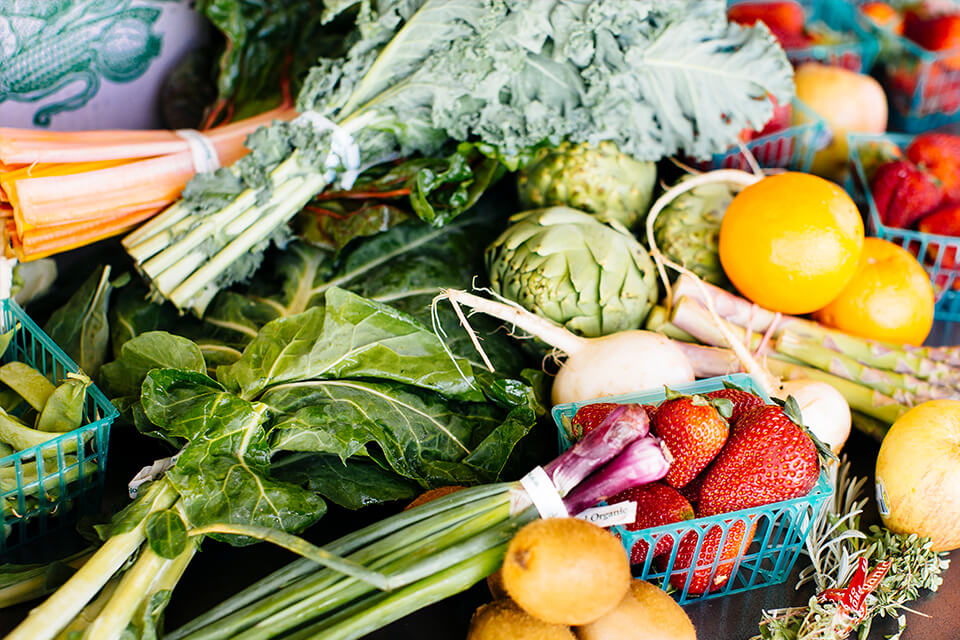
of food and beverage purchases met sustainability criteria ($201K)
of food and beverage purchases were plant-based ($2.3M)
The campus purchased 30% plant-based foods in fiscal year 2022–23, representing a 0.6% increase from the previous year. The campus also purchased 2.6% sustainable food products this year, a 2.7% decrease from the year prior. The fluctuation is due in part to limited operations at some dining halls owing to staffing and sales challenges.
Green building
In fiscal year 2022–23, the campus initiated three new major campus building projects: the School of Business New Building, the Student Health and Counseling Center, and the School of Medicine Education Building II. Plans for two of the projects call for incorporating solar photovoltaic cells on their rooftops, adding to the campus’s current solar photovoltaic capacity of 8.5 megawatts.
1 Platinum, 11 Gold, 2 Silver and 1 Certified
Total number of LEED certifications
procurement

green spend on electronics (35%)
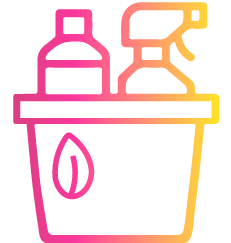
green spend on cleaning supplies (62%)

green spend on indoor office furniture (98%)

green spend on office supplies (52%)
The University reports on green spend, as defined in the Sustainable Procurement Guidelines, and reached out to suppliers for spend data in four product categories for this year’s report.
Green spend is defined as meeting preferred or minimum criteria in UC’s Sustainable Procurement Guidelines.
Suppliers reporting: Electronics (7), Furniture (3), Cleaning supplies (5), Office supplies (3).
UC Systemwide Spend Analytics category data provided by CalUSource.
Sustainable Building & Laboratory Operations
In fiscal year 2022–23, UC Riverside Green Labs expanded by growing its student staff, implementing the Fisher incentive program and overhauling its approach to assessments. This enabled the group to increase overall engagement in labs, workshops and assessments. In its first year, the Fisher incentive program made $10,000 available to assist labs in switching equipment to more energy-efficient alternatives.
total assessed green laboratories
Transportation
of employees are utilizing alternative commuting methods
EV charging ports
of all vehicles acquired in 2023 were electric (zero-emission), plug-in hybrid or clean transportation fuel
In the 2022–23 fiscal year, UC Riverside’s single-occupancy-vehicle (SOV) commute rate did not return to pre-pandemic levels despite a full return to campus activities, plateauing at 44% below the 2019 SOV commute rate. This is a welcome sign that remote work arrangements, increased student housing and electric vehicle (EV) adoption are all helping reduce commute emissions. In addition, the Fleet department reported 59% of new vehicle purchases were alternative-fuel vehicles, including 20 all-electric carts and three EVs.
WATER
*Based on a 3-year average of fiscal years 2005-08
**2025 goal is a 36% reduction from baseline
UC Riverside exceeded the systemwide potable water reduction goal by 2 percentage points in fiscal year 2022–2023, coming in at 38%. Factors affecting water use included a return to in-person classes, full capacity at residential housing and the addition of new campus buildings. Total potable water use from Riverside Public Utilities and Coachella Valley Water District were gathered from EnergyCAP. Gage Canal water was not included as it is agricultural (nonpotable) water used at the Agricultural Experiment Station.
ZERO WASTE – GENERATion
*These numbers might include a small amount of incineration that is being phased out.
**In 2021, waste generation per weighted campus user spiked due to pandemic-related closures as base-level operations continued but the number of users on campus decreased.
In fiscal year 2022–23, UC Riverside’s total waste generated per capita was 0.52 pounds per person per day, 51% below the baseline year, thus reaching the systemwide 2030 target early despite a full return to in-person campus activities. Multiple retail food establishments and dining halls began ramping up dining operations near the end of the fiscal year, which may have impacted the amount of campus waste generated.
ZERO WASTE – DIVERsion
*Waste incineration was counted as diversion prior to July 2022.
In fiscal year 2022–23, the campus increased its diversion rate by 3% over the previous year, bringing it to 57%. UC Riverside worked with its soft drink provider to replace single-use plastic water bottles with aluminum bottles, eliminating 68% of single-use plastic beverage bottles used on campus.
Awards
UC Riverside’s Student Success Building received multiple recognitions this year, including a National Award of Excellence and Merit from the Design Build Institute of America and first place in Keep Riverside Clean and Beautiful’s annual beautification awards. UC Riverside was also recognized for its first solar rooftop installations, on the Student Recreation Center South and the Student Services Building, by the Solar Builder Magazine’s Project of the Year Awards.
A full list of awards is featured on the UC Office of the President’s website.
 Sustainability Annual Report 2023
Sustainability Annual Report 2023